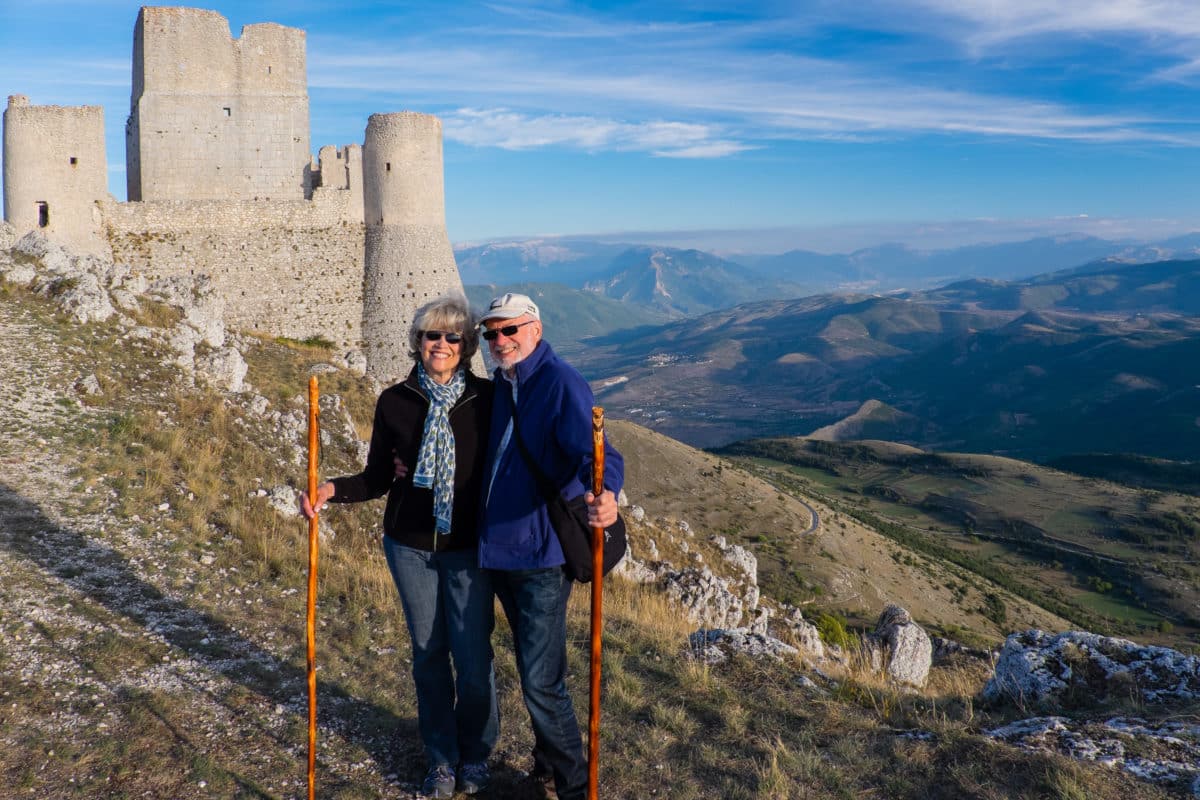Italy is in the top ten of most travel bucket lists, with Rome, Florence and Venice the favorite destinations. But Italy offers numerous possibilities for touring away from the cities, and one of these is the Abruzzo region on the Adriatic coast.
I had admired the writing of journalist, cookbook author and Italian food expert Domenica Marchetti. She had links in her blog to the culinary tour run by Abruzzo Presto!, for which she would be providing cooking lessons. Coincidentally, friends who had taken the tour returned singing Abruzzo Presto!’s praises. And so my husband and I put our travel plans (and the driving!) in the hands of Abruzzo Presto! proprietor Michael Morizio and his wife and business partner, Nancy Morizio.
In Italy, if you tell someone you are going to Abruzzo, they just might reply: “You will eat well there!” Indeed, Abruzzo is famous throughout Italy for its artichokes, legumes and potatoes grown in the rich earth of a huge plain which was exposed after a large lake was drained in the 19th century.
Saffron, grown in the town of Novelli, is shipped all over Italy and is known as “red gold.” Truffles are another treasure prized here, searched for by skilled foragers and their dogs. On market day in Sulmona, the town in which we were based, the busy stalls were loaded with locally harvested vegetables and fruits.
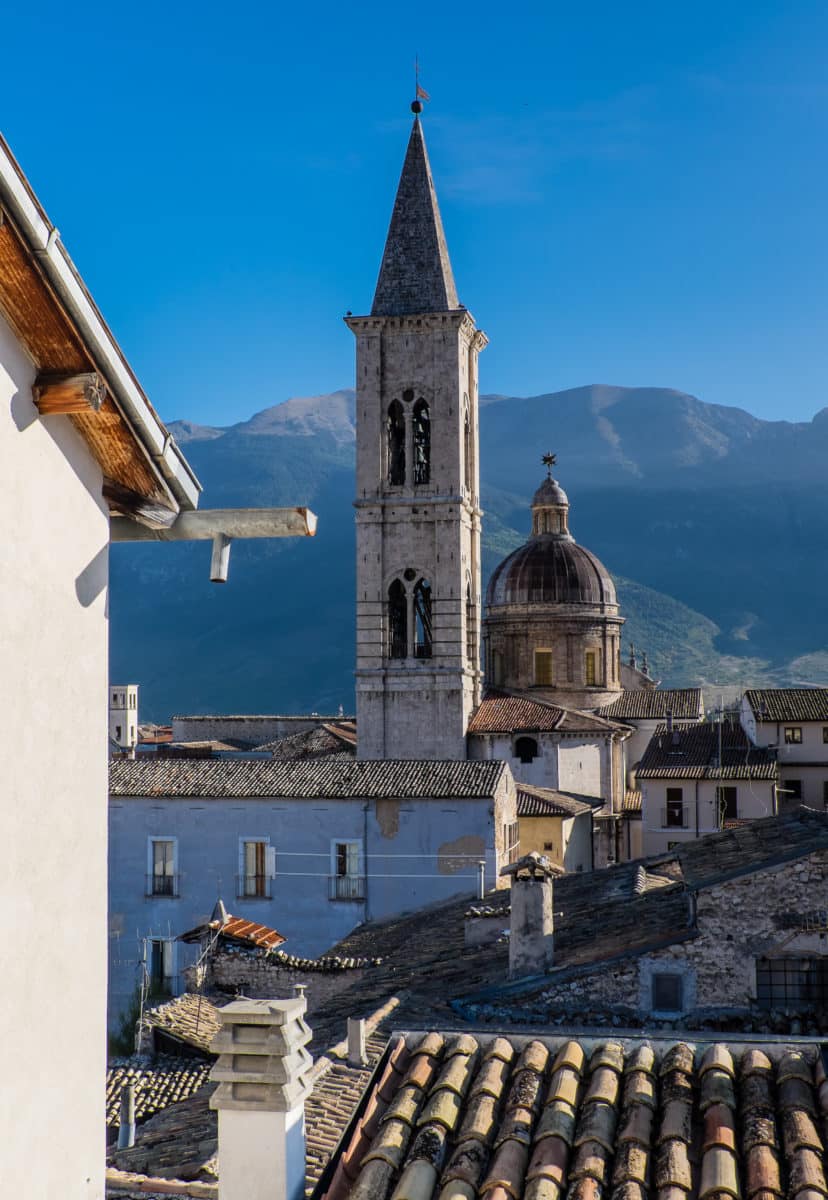
Raising sheep has long been a prevalent part of the Abruzzese way of life. The Transumanza, the bi-annual sheep migration between winter and summer pastures, has been part of the agricultural calendar here for 3000 years, creating (very well fertilized!) grooves in the earth 350 feet wide and hundreds of kilometers long which can still be seen from planes flying over parts of Italy.
The pastureland of the high desert is also home to the famous Marchigiana cattle, a breed related to the famous white Chianina cattle of Le Marche, the region north of Abruzzo.
Abruzzo’s western boundary is only about 50 miles east of Rome and its mountains boast ski resorts that rival those in the Alps. We, however, headed to the mountains on a sparkling morning for an experience of a culinary nature. As we ascended the mountain switchbacks on a wide paved road we stopped to photograph sheep as they grazed, watched over by their gentle guardians, white Maremma sheepdogs, while their shepherd rested under a distant tree. Further on, we paused to watch a line of cows and a few bawling calves amble down a well-worn mountain path, their cow bells providing musical accompaniment.
We had traveled to the mountains to indulge in the scenery and the popular and delicious tradition of arrosticini: well marbled lamb, sausages, and steaks specially prepared and cut fresh for diners to cook themselves on long, narrow outdoor grills. It takes only a few minutes for the super-thin cuts of skewered meat to reach a perfect medium rare. Our picnic was served on a red checkered tablecloth, the grilled meats accompanied by bruschetta, salumi, cheese, marinated vegetables and of course, beer and wine. For dessert there were anise-flavored crisp ciambelle cookies, a local specialty, and fresh fruit. As the grills sizzled, the autumn afternoon sun warmed our backs and bathed the 6,000 foot high mountain ridges in golden light.
Raising sheep has long been a prevalent part of the Abruzzese way of life. The Transumanza, the bi-annual sheep migration between winter and summer pastures, has been part of the agricultural calendar here for 3000 years, creating (very well fertilized!) grooves in the earth 350 feet wide and hundreds of kilometers long which can still be seen from planes flying over parts of Italy.
The pastureland of the high desert is also home to the famous Marchigiana cattle, a breed related to the famous white Chianina cattle of Le Marche, the region north of Abruzzo.
Abruzzo’s western boundary is only about 50 miles east of Rome and its mountains boast ski resorts that rival those in the Alps. We, however, headed to the mountains on a sparkling morning for an experience of a culinary nature. As we ascended the mountain switchbacks on a wide paved road we stopped to photograph sheep as they grazed, watched over by their gentle guardians, white Maremma sheepdogs, while their shepherd rested under a distant tree. Further on, we paused to watch a line of cows and a few bawling calves amble down a well-worn mountain path, their cow bells providing musical accompaniment.
It was clear that our guides had forged special relationships in the region and that we were the beneficiaries of all the love. This was the case when we visited an organic farm and its rustic restaurant, both owned by an ebullient shepherd, Gregorio. We were intrigued as we entered the sunny neat-as-a-pin restaurant; each place at each table had a bundle wrapped in checkered cloth. Opening them, we each found our plate, cutlery, wine and water glasses, and napkin; the checked fabric wrappers became our place-mats.
The farm produces several award-winning cheeses, including a creamy brie-like pecorino. Our simple and hearty lunch included a treat new to me – lightly pickled zucchini and summer squash – a lightly crunchy, refreshing complement to the rich salumi and cheese. Here, our pasta course was a giant raviolo filled with fresh herb-flecked ricotta that we cut into portions at the table for serving.
After lunch we were welcomed into the kitchen for a glass of wine and to chat with the expansive Gregorio. The work space bustled with activity, a caldron of their fresh raspberry jam simmered under a cook’s watchful eye. Crates of plum tomatoes and shelling beans still in their pods waited for their turn on the commercial stove. Last, we visited the aging “cave,” a climate- controlled room where, under the bulbous cheeses strung from sawn-off tree boughs, old wooden wine barrels aged Gregorio’s special hard pecorino – delicioso!
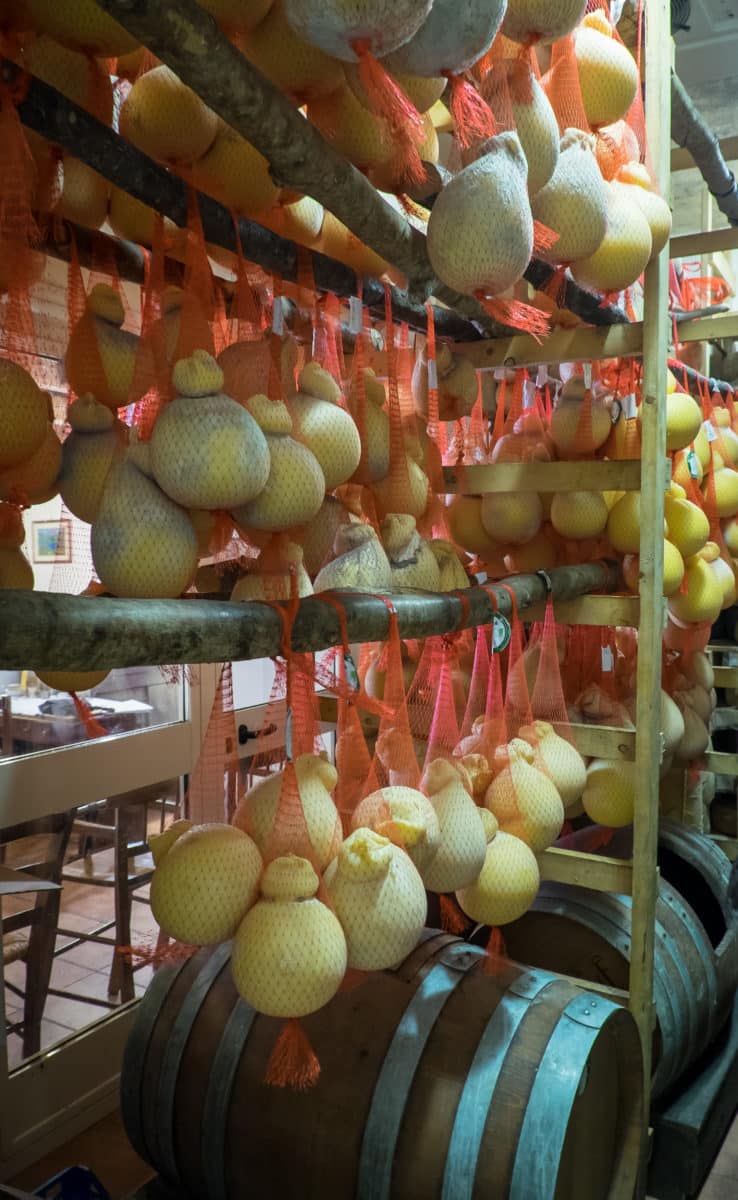
For evening meals, Michael and Nancy wisely employed a “small plate” approach, enabling us to enjoy the meal despite our late lunches. We still managed to make a large dent in every meal once we had a taste of a skilled chef’s prized offerings.
Our B&B in Sulmona was an elegant townhouse providing us with sumptuous breakfasts on a terrace with a view of tile roofs and the working bell towers of the old town. One morning a deliciously moist and delicate sambuca flavored apple cake was added to the groaning board, leaving us content for the ride to the hills of Chieti where Michael’s Italian extended family lives. Despite our inability to speak the same language, we soon became fast friends with his clan – facilitated by some of his uncle’s good homemade wine.

A cooking lesson was on our agenda and we soon were up to our elbows in pasta under the tutelage of Domenica and Lena, Michael’s indefatigable aunt. We learned to use the chitarra (as in guitar), an Abruzzese kitchen tool on which sheets of pasta are laid and pressed through taut wires with a wooden rolling pin, cutting many skinny strands of pasta all at once. After much fun – and a few trips to the cantina (wine cellar) for refills – we sat down to a lovely, long lunch with four Italian generations at the table. We finally left at close to four o’clock, and traveled to our new accommodations in a restored seventeenth century agritourismo – a working farm also functioning as a bed-and-breakfast.
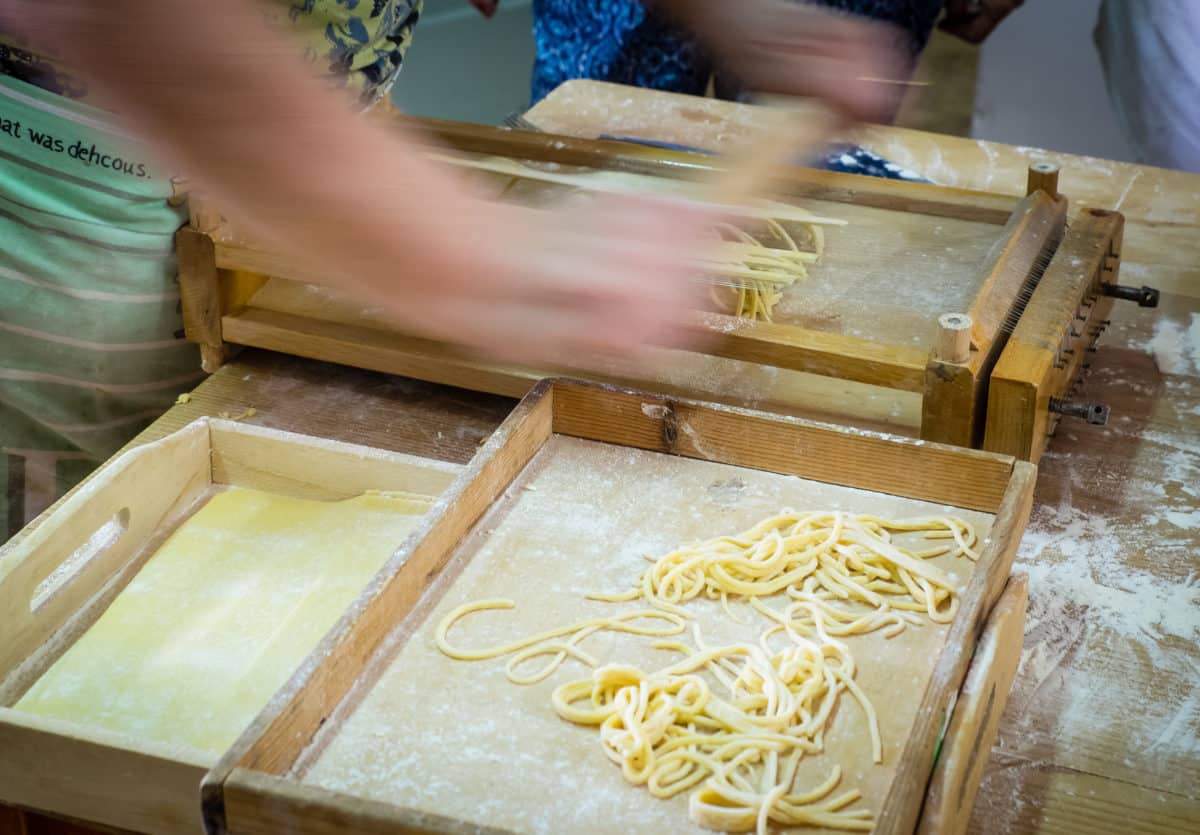
We were greeted by the owners’ little terrier, Bella, who accompanied us up to our second floor balcony overlooking the property, an Eden with red deer, peacocks, and extensive gardens, and a view of the Adriatic, 10 kilometers distant.
Later that evening, when we were ensconced in a sweet little restaurant, I wondered how I could possibly find the room or the will to eat after having had a home-cooked pasta banquet just a few hours before. Yet once we started to eat the simple, small servings of the regional food, especially savory little fried morsels of cheese souffle, I knew we were in the hands of another talented chef. We finished with small slices of rich cake, a family recipe from the chef’s mother.



Chatting with the chef over after-dinner caffè, I asked him how he came to choose Girasole (sunflower) as the name for his restaurant. He replied that in the town where he grew up it is the custom that families have nicknames; his family’s nickname is Girasole. The teenage waiter who had been listening at the other end of the table (and understanding English quite well, apparently) enthusiastically chimed in that he and his four brothers were nicknamed Ta, Te, Ti, To, Tu! (the Italian equivalent of our English A, E, I, O, U).
We had many more wonderful experiences. We hiked the trail to the highest castle in Europe, ate suckling pig, and had a private tour of a 12th century chapel – commissioned by Charlemagne – that had impressive floor-to-ceiling frescoes. We had excellent wines paired with fantastic food at two fine family wineries. Our tour was everything we had hoped for, and more.
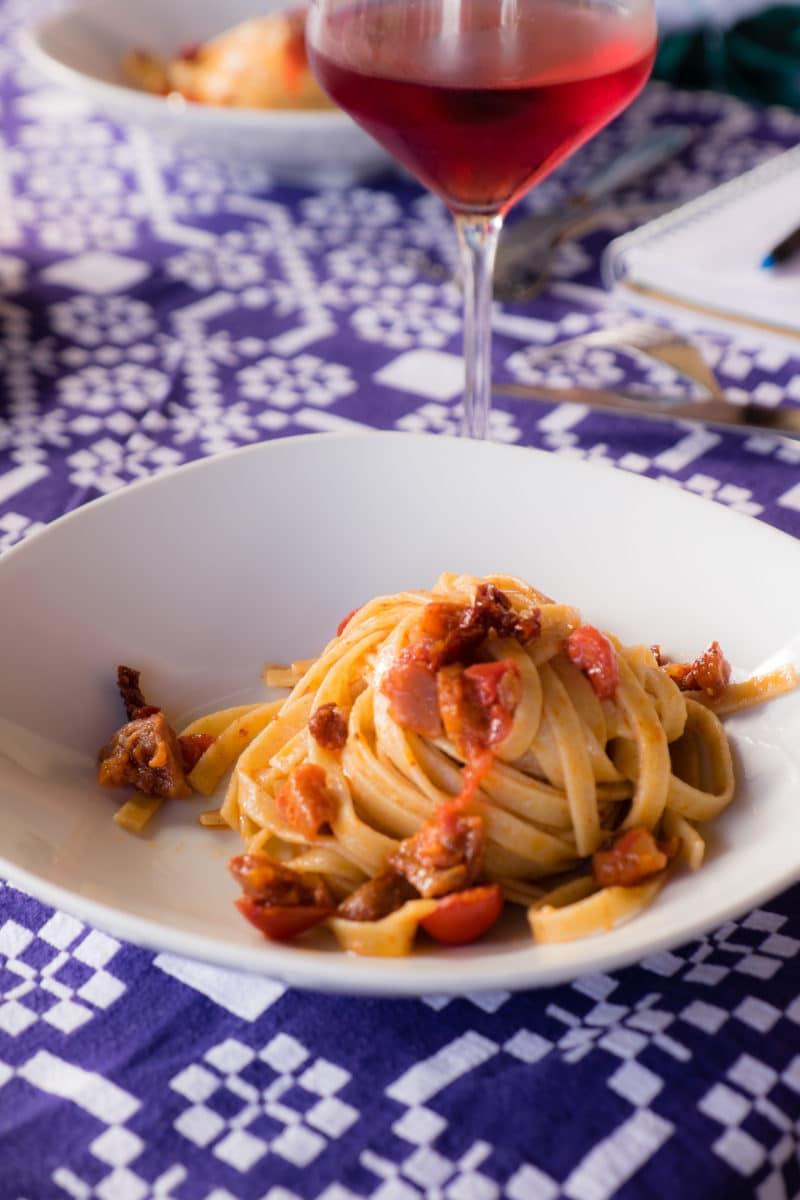
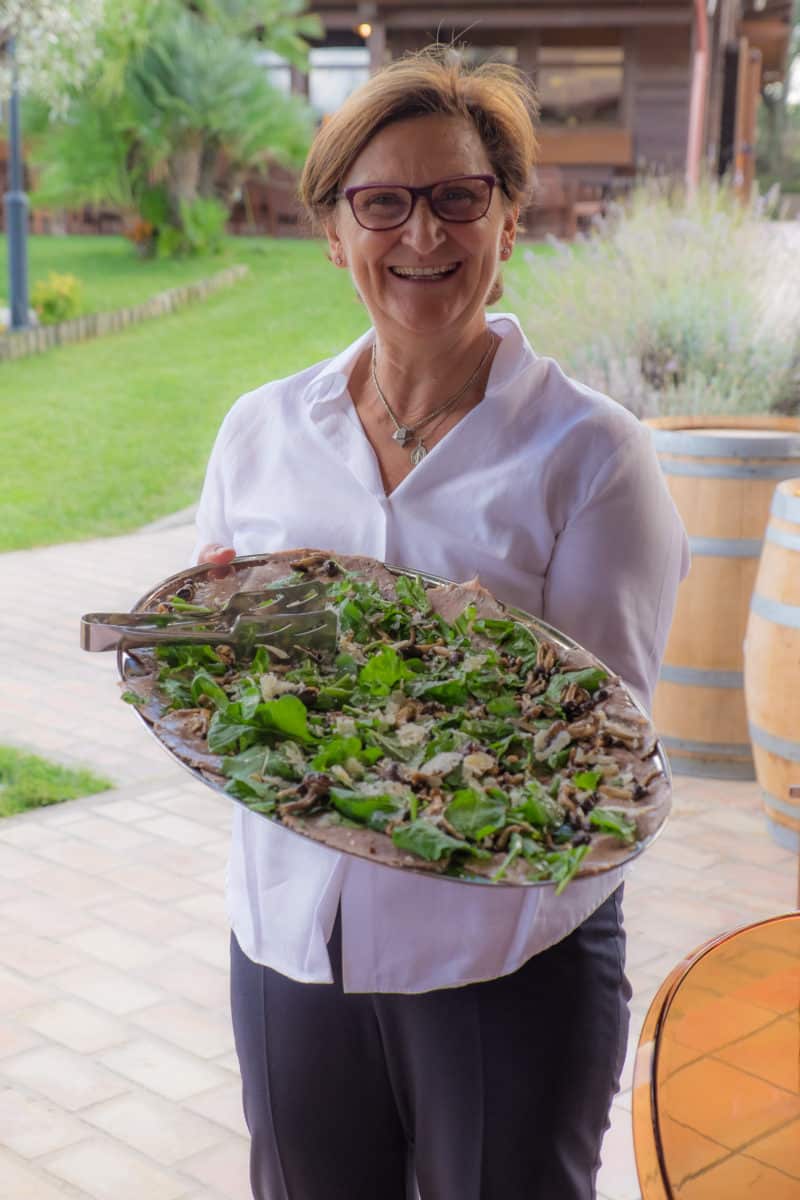
The interactions you have with people on your travels create the memories with the greatest staying power. A well-planned tour facilitates making those connections; the rest is up to you. ![]()
First published December 2015

